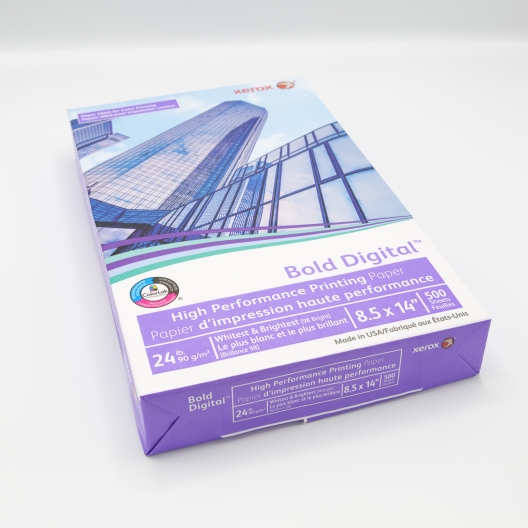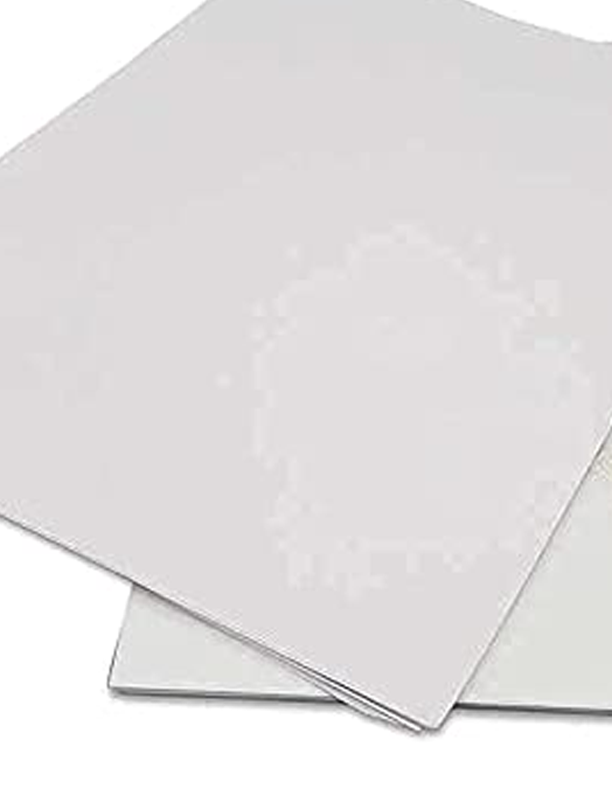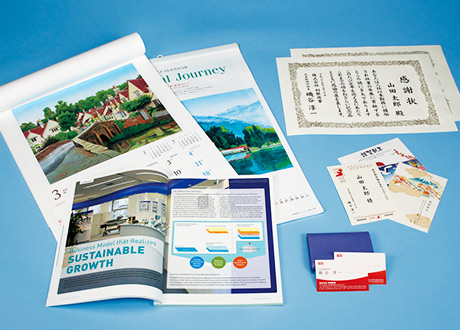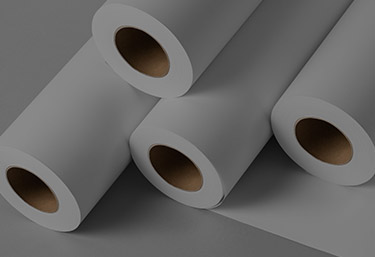A nagy teljesítményű speciális papír a megfelelő választás az Ön számára?
A nagy teljesítményű speciális papírok jellemzői és típusai
A nagyteljesítményű speciális papír egy olyan egyedi papírtípus, amely kiemelkedik a tipikus irodai vagy nyomtatópapírok közül. Olyan különleges tulajdonságokkal rendelkezik, amelyek alkalmassá teszik az alkalmazások és iparágak széles körére. Ebben a fejezetben a nagy teljesítményű speciális papír legfontosabb jellemzőit, a különböző típusokat, valamint azt vizsgáljuk meg, hogy ezek a jellemzők hogyan befolyásolják a felhasználást és az alkalmazásokat. Megbeszéljük továbbá a nagy teljesítményű speciális papírok használatának előnyeit bizonyos projektekben.
A nagy teljesítményű speciális papír fő jellemzői
A nagyteljesítményű speciális papírokat úgy tervezték, hogy megfeleljenek a gyártási folyamatok vagy különleges anyagok hozzáadása révén elért különleges teljesítménykövetelményeknek. A nagyteljesítményű speciális papírok néhány kulcsfontosságú jellemzője a következő:
- Vízálló: A vízálló tulajdonságokkal rendelkező speciális papírokat általában olyan alkalmazásokban használják, ahol nedvességnek vagy folyadékoknak való kitettség várható. Ezek a papírok ellenállnak a vízkárosodásnak, így biztosítják a tartósságot és a megbízhatóságot.
- Olajálló: Bizonyos speciális papírokat olyan bevonattal kezelnek, amely ellenállóvá teszi őket az olajjal és a zsírral szemben. Ezeket a papírokat általában az élelmiszeriparban használják olyan alkalmazásokhoz, mint a csomagolás és a csomagolóanyagok.
- Magas hőmérsékletnek ellenálló: A magas hőmérsékletnek ellenálló speciális papírokat olyan alkalmazásokban használják, ahol a hőállóság kulcsfontosságú. Ezek a papírok még szélsőséges hőmérsékleti körülmények között is megőrzik szerkezeti integritásukat.
- Lángálló: A lángálló speciális papírokat olyan anyagokkal kezelik, amelyek gátolják a lángok terjedését. Általában olyan iparágakban használják őket, ahol a tűzbiztonság kiemelt fontosságú, például az építőiparban és a gyártásban.
- Nagy szilárdságú: Egyes speciális papírok kivételes szilárdsággal és tartóssággal rendelkeznek. Ezek a papírok ellenállnak a nagy igénybevételnek, így alkalmasak olyan alkalmazásokhoz, amelyek robusztus teljesítményt és hosszú élettartamot igényelnek.
- Átlátszóság: Az áttetsző speciális papírok kiváló áttetszőséget biztosítanak, átengedve a fényt, miközben elegáns és finom megjelenést biztosítanak. Ezeket a papírokat általában olyan alkalmazásokban használják, mint a brosúrák, névjegykártyák és meghívók.
- Fényes felület: A tükörsima fényes felülettel rendelkező speciális papírok fényűző és kiváló minőségű megjelenést biztosítanak. Ezeket a papírokat gyakran használják olyan alkalmazásokban, ahol a vizuális megjelenés alapvető fontosságú, például mappák, csomagolások és üdvözlőkártyák esetében.
Ezek a tulajdonságok teszik a nagy teljesítményű speciális papírokat alkalmassá a legkülönbözőbb iparágak és alkalmazások számára, beleértve a fogyasztási cikkeket, az ipari termékeket, az építőanyagokat, a kereskedelmi nyomtatást és a csúcstechnológiai alkalmazásokat. A tulajdonságok széles skálája biztosítja, hogy a különböző projektek változatos igényeinek megfelelő speciális papír álljon rendelkezésre.
Különböző típusú speciális papírok állnak rendelkezésre
Most, hogy megértettük a nagy teljesítményű speciális papír legfontosabb jellemzőit, vizsgáljuk meg a piacon kapható különböző típusokat. A speciális papírok minden típusa egyedi tulajdonságokkal és jellemzőkkel rendelkezik, amelyek alkalmassá teszik őket bizonyos alkalmazásokhoz. Íme néhány általánosan használt speciális papírtípus:
- ASPIRE Petallics: Ezt a kétoldalas fémes papír- és borítékcsaládot a kontinens szirmai és a fémek ihlették. Ideális brosúrákhoz, névjegykártyákhoz, meghívókhoz és különböző grafikai tervezési projektekhez. Az ASPIRE Petallics speciális papír kompatibilis az olyan nyomtatási módszerekkel, mint az ofszet litográfia, a termográfia, a flexográfia, a magasnyomás, a mélynyomás és még sok más.
- Pénznem Fémes speciális papír: Az arany és ezüst színben kapható, fémes árú speciális papír eleganciát kölcsönöz a brosúráknak, névjegykártyáknak és grafikai tervezési projekteknek. Esztétikai vonzerővel és tartóssággal egyaránt rendelkezik, így népszerű választás a csúcskategóriás alkalmazásokhoz.
- Glama Natural: A Glama Natural egy természetes fényáteresztő papír, amely kiváló fényáteresztő képességgel és hajtogathatósággal rendelkezik. Általában olyan alkalmazásokban használják, mint a brosúrák, névjegykártyák, meghívók és grafikai tervezési projektek. A Glama Natural speciális papír kompatibilis az olyan nyomtatási módszerekkel, mint az ofszet litográfia, a szitanyomás, a fóliabélyegzés stb.
- Glama Kraft: A Glama Kraft egy 100% újrahasznosított tartalomból készült, nyomtatható kraft papír. Ideális különböző projektekhez, többek között brosúrákhoz, névjegykártyákhoz és csomagolásokhoz. Fenntartható és környezetbarát tulajdonságainak köszönhetően a Glama Kraft népszerű választás a környezettudatos projektekhez.
- Kromekote®: A Kromekote® speciális papír tükörsima fényes felületéről ismert. Kivételes nyomtathatóságot biztosít, és olyan alkalmazásokhoz alkalmas, amelyek magas szintű vizuális megjelenést igényelnek, mint például mappák, csomagolások, üdvözlőkártyák és egyéb alkalmazások. A Kromekote® speciális papír kompatibilis az olyan nyomtatási módszerekkel, mint az ofszet litográfia, a fóliabélyegzés, a szitanyomás stb.
- Pixelle Speciális papírok: A Pixelle a különböző piacok és egyedi projektigények kielégítésére tervezett speciális papírok átfogó portfólióját kínálja. Speciális papírjaik aprólékos folyamaton mennek keresztül a fűrészárutól a végső csomagolásig, biztosítva a legmagasabb minőséget és teljesítményt. A Pixelle a fenntarthatóságra is összpontosít, és innovatív barrier bevonat technológiákat kínál a fenntartható csomagolási megoldásokhoz, például a zsírok blokkolására, a folyadékok visszatartására, az aromák lezárására és a műanyag megújuló szubsztrátokkal való helyettesítésére.
- Release-kezelt cukorka pohár papír: Az olyan speciális papírokat, mint a felszabadítással kezelt cukorkás pohárpapír, speciális élelmiszeripari alkalmazásokhoz tervezték. Ezeket a papírokat úgy kezelik, hogy bordázottak legyenek, és többféle színben kaphatók. Általában cukorkás poharakhoz használják őket, és biztosítják az élelmiszercsomagoláshoz szükséges szilárdságot és funkcionalitást.
Ez csak néhány példa a piacon kapható nagy teljesítményű speciális papírok különböző típusaira. Mindegyik típus különálló tulajdonságokkal és jellemzőkkel rendelkezik, amelyek alkalmassá teszik őket bizonyos alkalmazásokhoz. Amikor egy projekthez speciális papírt választunk, az optimális eredmények biztosítása érdekében feltétlenül figyelembe kell venni a kívánt tulajdonságokat és teljesítménykövetelményeket.
A speciális papírok jellemzőinek hatása a felhasználásokra és alkalmazásokra
A speciális papírok egyedi jellemzői jelentősen befolyásolják felhasználási és alkalmazási területeit. A speciális papír különleges tulajdonságai miatt ideális a különböző iparágak és projektek számára. Íme néhány példa arra, hogy a speciális papír jellemzői hogyan befolyásolják az alkalmazását:
- Élelmiszer-csomagolás: A vízálló, olajálló és hőálló speciális papírokat gyakran használják élelmiszer-csomagolási alkalmazásokban. Ezek a papírok védőgátat képeznek a nedvesség, a zsír és a magas hőmérséklet ellen, biztosítva az élelmiszer frissességét és sértetlenségét.
- Grafikai tervezési projektek: Az áttetsző és fényes speciális papírokat gyakran használják grafikai tervezési projektekben, hogy vizuálisan vonzó brosúrákat, névjegykártyákat, meghívókat és egyéb promóciós anyagokat készítsenek. Ezek a papírok javítják az általános esztétikát, és erős benyomást keltenek a célközönségben.
- High-Tech alkalmazások: A nagy teljesítményű, speciális bevonatokkal és tulajdonságokkal rendelkező speciális papírokat olyan csúcstechnológiai alkalmazásokban használják, amelyek rendkívüli tartósságot, vízállóságot és hőállóságot igényelnek. Ezek a papírok általában olyan iparágakban találhatók meg, mint a repülőgépipar, az autóipar és az elektronika.
- Fenntartható csomagolás: A fenntarthatóságra és az innovativitásra összpontosító speciális papírokat széles körben használják a fenntartható csomagolási megoldásokban. Ezek a papírok környezetbarát alternatívát kínálnak a hagyományos műanyag csomagolások helyett, hozzájárulva a környezetvédelemhez és a hulladék csökkentéséhez.
A nagyteljesítményű speciális papír jellemzői döntő szerepet játszanak annak meghatározásában, hogy az adott projektekben és iparágakban alkalmazható-e. E jellemzők megértése lehetővé teszi a felhasználók számára, hogy az igényeiknek megfelelő papírt válasszák ki, biztosítva az optimális teljesítményt és a kívánt eredményeket.
A nagy teljesítményű speciális papír használatának előnyei
A nagy teljesítményű speciális papír használata bizonyos projektekhez számos előnnyel jár. Íme néhány előnye a nagy teljesítményű speciális papír használatának:
- Fokozott tartósság: A speciális papírokat úgy tervezték, hogy ellenálljanak a különböző környezeti körülményeknek, és a hagyományos irodai vagy nyomtatópapírokhoz képest kiváló tartósságot biztosítsanak. Ez azt jelenti, hogy az Ön projektje képes lesz ellenállni a nagy igénybevételnek, a kopásnak és a külső tényezőknek, amelyek potenciálisan károsíthatják a papírt.
- Javított esztétika: A speciális papírok a felületek, színek és textúrák széles skálájával állnak rendelkezésre, így vizuálisan vonzó és figyelemfelkeltő termékeket hozhat létre. Akár brosúrákat, névjegykártyákat vagy csomagolást tervez, a speciális papírok luxus és kifinomultságot kölcsönöznek projektjének.
- Testreszabási lehetőségek: A speciális papírok testreszabási lehetőségeket kínálnak, így Ön kiválaszthatja a projekt követelményeinek leginkább megfelelő speciális tulajdonságokat és felületeket. Akár egy bizonyos szintű fényáteresztő képességre, akár egy bizonyos színre van szüksége, a speciális papírokat az Ön egyedi igényeihez lehet igazítani.
- Környezeti fenntarthatóság: Számos speciális papírt fenntartható gyakorlatok és megújuló erőforrások felhasználásával állítanak elő. A nagy teljesítményű speciális papírok használatával hozzájárulhat a környezetvédelemhez és támogathatja a fenntartható csomagolási megoldásokat.
- Sokoldalúság: A nagy teljesítményű speciális papír a különböző iparágakban számos alkalmazáshoz alkalmas. Akár az élelmiszeriparban, a grafikai tervezés területén vagy a csúcstechnológiai ágazatban dolgozik, a speciális papír megfelelhet az Ön egyedi követelményeinek, és növelheti projektje teljesítményét.
A nagy teljesítményű speciális papírok használatával kiváló eredményeket érhet el projektjeiben, javíthatja márkája imázsát, és megfelelhet az egyedi iparági követelményeknek.
Összefoglalva, a nagyteljesítményű speciális papír egyedi tulajdonságokkal és jellemzőkkel rendelkezik, amelyek alkalmassá teszik a különböző alkalmazásokhoz és iparágakhoz. A speciális papírok legfontosabb jellemzőinek, a rendelkezésre álló különböző típusoknak, valamint annak megértése, hogy ezek a jellemzők hogyan hatnak a felhasználásra és az alkalmazásokra, alapvető fontosságú a megfelelő papír kiválasztásához az Ön konkrét projektjeihez. A nagy teljesítményű speciális papírok felhasználásával növelheti a tartósságot, javíthatja az esztétikát, testre szabhatja termékeit, támogathatja a fenntarthatóságot, és sokoldalú eredményeket érhet el. Tehát, amikor legközelebb olyan projektbe kezd, amely kivételes teljesítményt és különleges vizuális vonzerőt igényel, fontolja meg a nagy teljesítményű speciális papír használatát.
Ebben a fejezetben a nagy teljesítményű speciális papír legfontosabb jellemzőit és típusait vizsgáltuk, megvitattuk, hogy ezek a jellemzők hogyan befolyásolják a felhasználási és alkalmazási területeket, és kiemeltük a nagy teljesítményű speciális papír használatának előnyeit bizonyos projektekben. A következő részben a nagy teljesítményű speciális papír felhasználásának alkalmazásaiba és legjobb gyakorlataiba mélyedünk bele, betekintést nyújtva abba, hogyan lehet a speciális papírt hatékonyan felhasználni a különböző forgatókönyvekben.
Alkalmazások és legjobb gyakorlatok a nagy teljesítményű speciális papírokhoz
A nagy teljesítményű speciális papír egyedi tulajdonságokkal és jellemzőkkel rendelkezik, amelyek sokoldalúan felhasználhatóvá teszik a legkülönbözőbb alkalmazásokhoz. A grafikai tervezési projektektől kezdve a kereskedelmi nyomtatásig és a csomagolásig a speciális papírok bármilyen projekt minőségét és esztétikáját növelhetik. Ebben a részben a nagy teljesítményű speciális papírok néhány gyakori alkalmazási területét vizsgáljuk meg, és bemutatjuk a hatékony használatukhoz szükséges legjobb gyakorlatokat.
A nagy teljesítményű speciális papír gyakori alkalmazásai
A nagy teljesítményű speciális papírokat számos iparágban alkalmazzák, többek között a grafikai tervezésben, a kereskedelmi nyomtatásban és a csomagolásban. Íme néhány gyakori alkalmazás:
- Brosúrák és szórólapok: A nagy teljesítményű speciális papírokat gyakran használják figyelemfelkeltő brosúrák és szórólapok készítéséhez. A különleges papírok egyedi textúrái, felületek és színek segítségével a vállalkozások kitűnhetnek, és maradandó benyomást kelthetnek a potenciális ügyfelekben.
- Névjegykártyák: A speciális papír eleganciát és professzionalizmust kölcsönözhet a névjegykártyáknak. Az olyan opciókkal, mint a fémes felületkezelés vagy a texturált felület, a speciális papír emlékezetesebbé és vizuálisan vonzóbbá teheti a névjegykártyákat.
- Meghívók: Legyen szó esküvőről, partiról vagy vállalati rendezvényről, a különleges papír népszerű választás lenyűgöző meghívók készítéséhez. Egyedi textúrái és felületkezelései kifinomultságot és eleganciát kölcsönözhetnek bármely különleges alkalomnak.
- Csomagolás: A speciális papírokat a csomagolóiparban is széles körben használják. Tartóssága, szilárdsága és különböző nyomtatási technikáknak való ellenállóképessége miatt tökéletes termékcsomagoláshoz, ajándékdobozokhoz és kiskereskedelmi displayekhez.
Legjobb gyakorlatok a speciális papír használatához grafikai tervezési projektekben
Ha speciális papírt használ grafikai tervezési projektekben, fontos, hogy figyelembe vegye a következő legjobb gyakorlatokat:
- A projekt követelményeinek megértése: Mielőtt kiválasztja a speciális papírt, elengedhetetlen, hogy megértse a projekt követelményeit. Vegye figyelembe az olyan tényezőket, mint a költségvetés, a nyomtatási módszer, a kívánt vizuális hatások és a projekt általános témája vagy koncepciója.
- Válassza ki a megfelelő papírsúlyt: A speciális papírok különböző súlyúak, és a megfelelő súly kiválasztása elengedhetetlen a kívánt hatás eléréséhez. A könnyebb súlyok ideálisak olyan projektekhez, mint a brosúrák vagy szórólapok, míg a nehezebb súlyok jól használhatóak névjegykártyákhoz vagy csomagolásokhoz.
- Tekintse a nyomtatási módszert: A különböző speciális papírtípusok speciális nyomtatási módszereket igényelnek a legjobb eredmény érdekében. Fontos, hogy konzultáljon egy nyomdai szakemberrel a választott speciális papírhoz ajánlott nyomtatási módszer meghatározásához.
- Kísérletezzen a textúrákkal és a befejezésekkel: A speciális papírok egyik előnye a textúrák és felületek széles választéka. A különböző textúrákkal és felületképzésekkel való kísérletezés segíthet egyedi és vizuálisan vonzó minták létrehozásában. A projekt követelményei alapján fontolja meg az olyan lehetőségeket, mint a fémes, matt, fényes vagy dombornyomott textúrák.
Ajánlott nyomtatási módszerek különböző speciális papírtípusokhoz
A nyomtatási módszer megválasztása jelentősen befolyásolhatja a végeredményt, ha speciális papírral dolgozik. Íme néhány ajánlott nyomtatási módszer a különböző típusú speciális papírokhoz:
- Ofszet litográfia: Az ofszet litográfia a speciális papírok esetében általánosan használt nyomtatási módszer. Magas képminőséget biztosít, és a speciális papírok széles skálájával jól működik, beleértve a fémes, áttetsző vagy texturált felületeket is.
- Fólia bélyegzés: A fóliabélyegzés kiváló lehetőség fémes ékezetek vagy logók hozzáadására speciális papírokhoz. Fényűző és szemet gyönyörködtető hatást kelt, így ideális a csúcskategóriás csomagolásokhoz vagy névjegykártyákhoz.
- Szitanyomás: A szitanyomás olyan speciális papírokhoz alkalmas, amelyek élénk és átlátszatlan színeket igényelnek. Jól működik texturált papírokon, és olyan egyedi hatásokat hozhat létre, amelyeket a hagyományos nyomtatási módszerekkel nem lehet elérni.
- Betűnyomás: A könyvnyomtatás egy hagyományos módszer, amely során a festéket nyomdagép segítségével nyomdafestékkel nyomják a speciális papírra. Elegáns és tapintható hatást kelt, ezért népszerű az esküvői meghívók vagy a kiváló minőségű levélpapírok esetében.
- Domborítás és dombornyomás: A domborítás és a dombornyomás olyan technikák, amelyekkel különleges papíron kiemelkedő vagy mélyített mintákat hozhatunk létre. Ezek a technikák mélységet és textúrát adnak a mintának, így vizuálisan vonzóvá és vonzóvá teszik azt.
A megfelelő speciális papír kiválasztása az adott projektekhez és igényekhez
A megfelelő speciális papír kiválasztása egy adott projekthez különböző tényezők gondos mérlegelését igényli. Íme néhány kulcsfontosságú szempont, amelyet érdemes szem előtt tartani:
- Projektkövetelmények: Ismerje meg a projekt egyedi követelményeit, beleértve a költségvetést, a nyomtatási módszert, a tartósságot és a kívánt vizuális hatást.
- Papír típusa: papír: Vegye figyelembe a rendelkezésre álló különböző speciális papírtípusokat, például a fémes, áttetsző, strukturált vagy bevonatos papírt. Mindegyik típusnak megvannak a maga egyedi tulajdonságai és jellemzői, amelyek javíthatják az általános dizájnt.
- Szín és kivitel: Válassza ki a speciális papír színét és felületét a kívánt esztétikai és márkaarculat alapján. Vegye fontolóra az olyan lehetőségeket, mint az élénk színek, a fémes kivitel vagy a matt textúra, hogy megfeleljen a projektnek.
- Papírsúly: Válassza ki a megfelelő papírsúlyt a projekt követelményei alapján. A könnyebb súlyok olyan projektekhez alkalmasak, mint a brosúrák vagy szórólapok, míg a nehezebb súlyok ideálisak névjegykártyákhoz vagy csomagolásokhoz.
- Környezeti megfontolások: Vegye figyelembe a speciális papír környezeti hatását. Keressen olyan papírokat, amelyek fenntartható forrásokból készülnek, és elismert tanúsítvánnyal rendelkeznek a környezettudatos gazdálkodásra vonatkozóan.
Ha követi ezeket a legjobb gyakorlatokat, és figyelembe veszi az egyes projektek egyedi követelményeit, akkor a nagy teljesítményű speciális papírokat hatékonyan használhatja a vizuálisan lenyűgöző és hatásos tervek létrehozásához. Legyen szó grafikai tervezésről, csomagolásról vagy promóciós anyagokról, a speciális papír végtelen lehetőségeket kínál egyedi és emlékezetes élmények létrehozására.
Fenntarthatóság és innováció a nagy teljesítményű speciális papírok terén
A speciális papír egyedi tulajdonságairól és nagy teljesítményű képességeiről ismert. E tulajdonságok mellett az iparág jelentős előrelépéseket tett a fenntarthatóság és az innováció terén is. Ebben a fejezetben azt vizsgáljuk meg, hogy a nagy teljesítményű speciális papírok hogyan járulnak hozzá a fenntartható csomagolási megoldásokhoz, az előállításukhoz használt innovatív technológiákat, a fogyasztók által keresendő környezetvédelmi tanúsítványokat, valamint azt, hogy a speciális papír minősége hogyan befolyásolja a környezeti hatását.
Hogyan járulnak hozzá a nagy teljesítményű speciális papírok a fenntartható csomagolási megoldásokhoz?
A fenntartható csomagolás számos vállalkozás és fogyasztó számára prioritássá vált. A nagy teljesítményű speciális papírok döntő szerepet játszanak a fenntartható csomagolási megoldások biztosításában. Ezek a papírok gyakran megújuló erőforrásokból, például felelősségteljesen előállított fapépből vagy újrahasznosított rostokból készülnek. Emellett környezetbarát gyártási folyamatok alkalmazásával készülnek, amelyek minimalizálják a hulladék mennyiségét és csökkentik a káros vegyi anyagok használatát. A nagy teljesítményű speciális csomagolópapírok használatával a vállalatok csökkenthetik szénlábnyomukat, és hozzájárulhatnak egy fenntarthatóbb jövőhöz.
A nagy teljesítményű speciális papír által lehetővé tett fenntartható csomagolás egyik példája a barrier bevonatok használata. Ezek a bevonatok helyettesíthetik a hagyományos műanyag laminátumokat, így a csomagolás teljes mértékben újrahasznosíthatóvá válik, és csökken a nem biológiailag lebomló hulladék mennyisége. A barrier bevonatok segítségével a papír zsírálló, nedvességálló és aromaszigetelő tulajdonságokkal rendelkezik, így alkalmas élelmiszer- és italcsomagolásra.
Milyen innovatív technológiákat alkalmaznak a speciális papírok gyártása során?
Az innováció kulcsfontosságú a nagy teljesítményű speciális papírok kifejlesztésében. A gyártók folyamatosan kutatják és alkalmazzák az új technológiákat a speciális papírok tulajdonságainak és teljesítményének javítása érdekében. Az egyik ilyen innováció a FlexArmor™ technológia alkalmazása az olaj- és zsírálló papírok esetében. Ez a technológia biztosítja az élelmiszeripari alkalmazások biztonságát és fenntarthatóságát azáltal, hogy műanyag bevonatok nélkül biztosít gátat a nedvesség és a zsír ellen.
A speciális papírgyártásban alkalmazott másik innovatív technológia a funkcionális bevonatok kifejlesztése. Ezek a bevonatok javítják a papír teljesítményét és tartósságát, így alkalmassá teszik a papírt olyan alkalmazásokhoz, amelyek különleges tulajdonságokat igényelnek, mint például a vízállóság, a lángállóság vagy a magas hőmérsékletnek való ellenállás. E bevonatok alkalmazásával a gyártók a különböző iparágak egyedi igényeihez igazíthatják a speciális papírokat.
Milyen környezetvédelmi tanúsítványokat kell keresniük a fogyasztóknak, amikor speciális papírtermékeket vásárolnak?
Speciális papírtermékek vásárlásakor fontos, hogy olyan környezetvédelmi tanúsítványokat keressen, amelyek biztosítják a fenntartható beszerzést és a felelős gyártási gyakorlatot. A következő tanúsítványok közül érdemes néhányat figyelembe venni:
- Forest Stewardship Council (FSC): Ez a tanúsítás biztosítja, hogy a papír felelősségteljesen kezelt erdőkből származik, amelyek megfelelnek a szigorú környezetvédelmi és társadalmi előírásoknak.
- Programme for the Endorsement of Forest Certification (PEFC): Az FSC-hez hasonlóan a PEFC is tanúsítja, hogy a papír fenntartható módon kezelt erdőkből származik.
- Fenntartható erdészeti kezdeményezés (SFI): Az SFI tanúsítás elősegíti a felelős erdőgazdálkodási gyakorlatot, és biztosítja, hogy a papír legális és felelősségteljesen kezelt erdőkből származik.
Az ilyen tanúsítvánnyal rendelkező speciális papírtermékek választásával a fogyasztók támogathatják a környezettudatos gyártókat, és hozzájárulhatnak erdeink megőrzéséhez.
Hogyan járul hozzá a speciális papír minősége a környezeti hatáshoz?
A speciális papír minősége jelentős szerepet játszik a környezetre gyakorolt hatásában. A jobb minőségű papírok gyakran tartósabbak és jobb teljesítménytulajdonságokkal rendelkeznek, így hosszabb ideig használhatók. Ez csökkenti a gyakori cserék szükségességét és végső soron a hulladék mennyiségét.
Ezenkívül a kiváló minőségű speciális papírokat gyakran fejlettebb gyártási eljárásokkal állítják elő, amelyek célja a hulladék és a környezetszennyezés minimalizálása. Ezek az eljárások magukban foglalhatják az energia és a víz hatékony felhasználását, valamint a gyártási melléktermékek újrahasznosítását vagy újrafelhasználását. A kiváló minőségű speciális papírokba való befektetéssel a fogyasztók hozzájárulhatnak a fenntarthatóbb és környezetbarátabb papíriparhoz.
Összefoglalva, a fenntarthatóság és az innováció kulcsfontosságú tényezők a nagy teljesítményű speciális papírok gyártásában és felhasználásában. Ezek a papírok hozzájárulnak a fenntartható csomagolási megoldásokhoz, innovatív technológiákat alkalmaznak, és betartják a környezetvédelmi tanúsítványokat. A kiváló minőségű speciális papírok választásával a fogyasztók pozitív hatást gyakorolhatnak a környezetre, miközben élvezhetik az e papírok által kínált egyedi tulajdonságokat.
A következő részben a nagy teljesítményű speciális papírok jellemzőit és típusait vizsgáljuk meg.
GYIK a nagy teljesítményű speciális papírról:
Melyek a nagyteljesítményű speciális papírok legfontosabb jellemzői?
V: A nagyteljesítményű speciális papírok kulcsfontosságú jellemzőinek azonosításához olyan tényezőket vizsgálunk, mint a vízálló tulajdonságok, olajálló bevonatok, magas hőmérsékleti ellenállás, lángállóság, nagy szilárdság, fényáteresztő képesség és fényes felületek.
Melyek a kapható speciális papírtípusok?
V: Különböző típusú speciális papírok kaphatók a piacon, mint például az ASPIRE Petallics, Currency Metallic Specialty Paper, Glama Natural, Glama Kraft, Kromekote, Pixelle Specialty Papers és Release-Treated Candy Cup Paper.
Hogyan befolyásolják a speciális papír jellemzői az alkalmazását?
V: A speciális papírok jellemzői, mint például a vízállóság, a lángmentesség, a fényes felületek és a nagy szilárdság, meghatározzák alkalmasságát olyan alkalmazásokhoz, mint az élelmiszercsomagolás, a grafikai tervezési projektek, a csúcstechnológiai alkalmazások és a fenntartható csomagolási megoldások.
Milyen előnyökkel jár a nagy teljesítményű speciális papír használata?
V: A nagy teljesítményű speciális papírok használata olyan előnyöket kínál, mint a fokozott tartósság, a jobb esztétika, a testreszabási lehetőségek, a környezeti fenntarthatóság és a sokoldalúság a különböző iparágakban és projektekben.
Melyek a legjobb gyakorlatok a speciális papír használatára a grafikai tervezési projektekben?
V: Amikor speciális papírt használ grafikai tervezési projektekben, elengedhetetlen a projekt követelményeinek megértése, a megfelelő papírsúly kiválasztása, a nyomtatási módszer mérlegelése, valamint a textúrákkal és felületkezeléssel való kísérletezés az egyedi és vizuálisan vonzó minták elérése érdekében.
Összefoglalva, a nagy teljesítményű speciális papír minden aspektusát lefedtük. Jellemzőinek, típusainak és alkalmazásainak megértése alapvető fontosságú a különböző projektekben való hatékony felhasználáshoz. A speciális papírok fenntarthatósága és innovációja kiemeli fontosságát a környezetbarát megoldásokban. A megfelelő papír és nyomtatási módszerek kiválasztásával optimalizálhatók az eredmények a grafikai tervezés és a csomagolás terén. Ne feledje, hogy a minőségi, ökológiai tanúsítvánnyal rendelkező speciális papír kiválasztása jelentős különbséget jelenthet a környezeti hatások csökkentésében.





